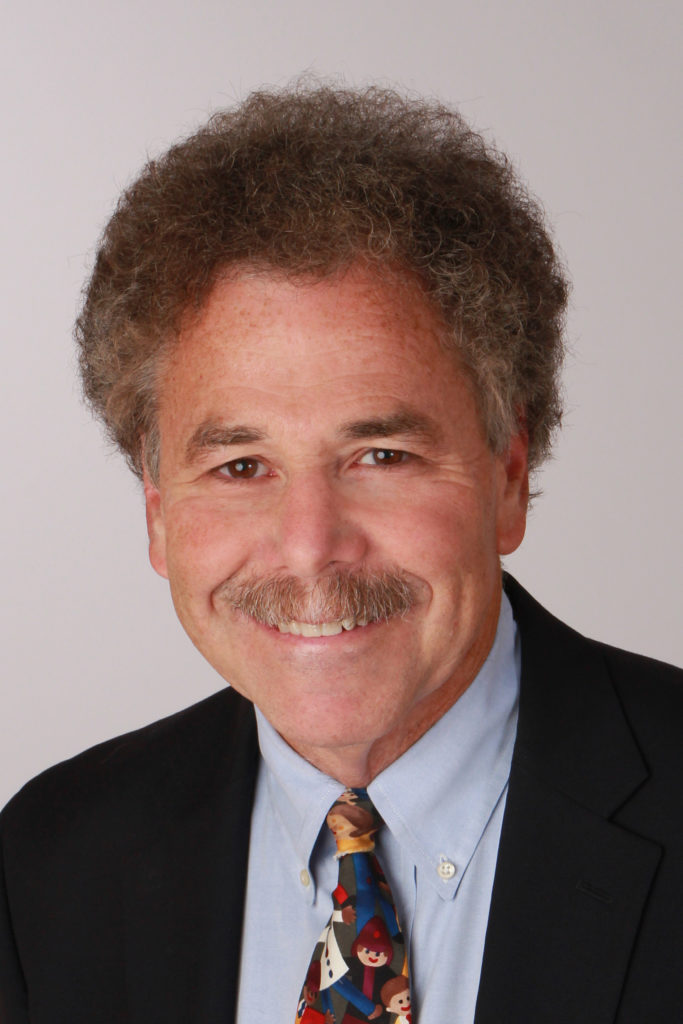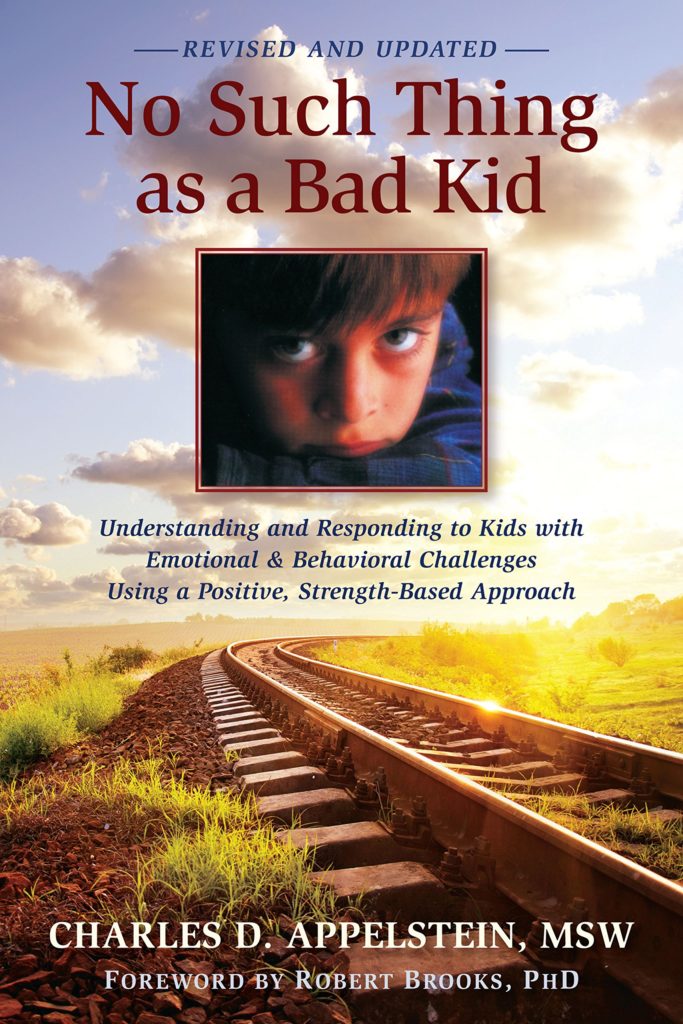By Charles D. Appelstein

I truly believe there is no such thing as a bad kid, just bad luck and bad choices. If you injected truth serum into any acting-out kid and asked, “Who would you rather be — you, the kid who is constantly acting out, or that kid over there who has lots of friends, a great family life and a wonderful future ahead of him?” — no kid would pick himself or herself. Their misbehavior is a message, a neon light flashing above their head, reading: Help me!
And the way to help is by using a positive, strength-based approach.
You can go online or read my book, No Such Thing as a Bad Kid, to see a formal definition of strength-based practice, but for me the approach is about two words: attitude and actions.
It starts with the inspirational attitude educators relay to students from the moment they meet that says: “I believe in you. I am excited to be working with you. And I just know you will be successful with me and forever. Let’s go!”
From that moment on, everything an educator says or does must be an extension of that attitude and message: “I believe in you.”
Why is this so important? There are a multitude of reasons.

When a teacher extends a positive attitude, it makes her students feel good, and chemicals actually get released in their brains helping them to function at a higher level. And these good feelings contribute to the development of meaningful teacher-student relationships. More and more research on school discipline is saying the same thing: If you want students to learn more and behave better, build great relationships with them.
An educator who believes unconditionally in every student knows that kids who struggle with their behavior are often riddled with self-doubt and lack hope for a meaningful future. The educator, therefore, uses an array of tools and strategies to confront hopelessness and, most importantly, change the self-defeating, negative mindsets many at-risk kids harbor.
Here are some of my favorite strength-based strategies for changing mindsets and maximizing student potential — in no particular order.
Get excited about little changes
In the strength-based world it is said that little changes can ripple into big solutions.
- Send postcards to a kid’s family when she has accomplished something noteworthy.
- Post positive work on walls.
- If a student does a little better with his behavior, focus on that. “Hey, this was the best class you’ve had all week. I’m proud of you, man! [Slap him five.] And I’m curious, why did you do better? I’m thinking that you’re now realizing that acting more mature and going with the flow is going to open more doors for you? Is that it?” We call this verbal intervention amplifying change using speculation.
Greet kids warmly every day!
Use memorable greetings with your kids.
- “How ya doing?”
- “I’m living the dream!” “All the better for seeing you!” “Happy as a hippo!” “Fantastic!” “Unbelievable!”
- Add touch — fist bumps, slap fives, etc.
Make sure your most challenging students experience multiple successes every day
Success in one area almost always generalizes to other aspects of a student’s day.
- Get dice! Break the kids into groups of two to four and have them take turns rolling two dice. The winning team is the one that can roll the most consecutive rolls without getting doubles. It’s what we call a universal opportunity for success.
- Play cards and other games with at-risk kids. Lose on purpose, but be a good actor.
- Have your more challenging kids volunteer somewhere.
- Modify academics or activities so kids have better opportunities for success.
Actively talk to kids about their futures
Use positive predicting (e.g., “How are we going to celebrate your best week in school? Who should I call when _______?”). When you talk about the future in positive terms, you make any desired outcome more possible. And when it’s more possible, it becomes more probable.
- Have your kids create business cards for their future professions. Post them all on a wall under the sign: Future Leaders of America (or your state).
- Download college diplomas. Place kids’ names and pictures on them and hang them on walls under the sign: College-Bound Kids!
Use consequences instead of punishment
Consequences are related to the behavior in question.
The most important thing an adult should think about before setting a limit is the sanctity of the relationship. Behavior comes and goes. Positive relationships are what drive kids to success. Punishment or badly delivered limit-setting hurts relationship formation.
Post inspirational slogans on walls
- The harder I try, the higher I fly. Be the eagle!
- What’s a mistake? An opportunity to take!
- If it’s stinkin’, change the thinkin’!
- If it is to be, it’s up to me!
- I’m smart, it’s in my heart. Believing in myself is where I start.
- Back on track, Jack!
Reframe problem behavior
Decode the function of a seemingly negative behavior and offer praise. For example:
- Behavior: Looking for attention.
- Reframe: “I’m glad that you act out for attention. I’m not sure you always got enough. You’re good at looking out for yourself. I apologize for anyone who has ever put you down for looking for attention.”
Use rhythmic self-talk
- Let it go, Joe.
- Just stay cool, no need to blow.
- Don’t call out, share the air.
- Make a list, it will assist.
- Here’s some advice, talk real nice.
- If you got to do it, just hop to it!
Manage your behavior first!
When students act out and you suffer a self-esteem injury, say to yourself: “It’s an injury and it will heal. Respond instead of react.” Respond means use the Golden Rule. (See sidebar “Before You Talk” below.)
And…
Avoid yelling, say please and thank you when making requests, and be cognizant of your body language.
– – – – – –
Author of No Such Thing as a Bad Kid, Charles D. Appelstein, MSW, focuses primarily on teaching positive, trauma-informed, strength-based theories and techniques to professionals who guide at-risk children, youth and families. He trains educators and other child welfare professionals throughout North America. For more, go to charliea.com.
This article is part of our series “Teaching Through Trauma.”
Before You Talk
Before you speak to an agitated student or group, consider the desired outcome and how to achieve it. No. 1 goal: Engage!
- Listen, empathize, paraphrase, offer help, apologize, repeat, offer hope… hook ’em in!
- Don’t be defensive. Anticipate negative comments — don’t take them personally.
- Expect displacement (that is, anger directed at you that is meant for someone else).
- Assess your relationship and feelings toward the youth. Think pie (as in, everyone deserves an equal slice). The kid who is pushing you away the most is probably the one who needs you the most.
- Practice the talk in your head. Longer discussions generally have a beginning, middle and end phase.
- Other considerations: Fill in the blank _______.
Read more stories in our special report “Teaching Through Trauma”:
Stories
- Teaching Students with Trauma: Practices that work
- A Culture of Compassion: What trauma-sensitive schools look like
- Phoenix Rising: Healing after natural disasters
- Crisis in Our Classrooms: Frightened, anxious immigrant students try to focus on education
- How COVID-19 Impacts the Undocumented
- Returning to Children’s Community Charter School in Paradise
- No Such Thing as a Bad Kid: Youth-care expert Charles D. Appelstein
- Taking Care of You, Too: Educator self-care is critical
- In Their Own Words: Helping students tell what they’ve lived
Resources
- How to help students after disaster
- Restorative practices that aid in trauma recovery
- Trauma Toolkit for Educators
- Helping our immigrant & undocumented students
- Know your rights with ICE
- Educator self-care tip sheet
- Defining trauma
- Symptoms of trauma
- Guidance from UC San Francisco’s HEARTS
The Discussion 0 comments Post a Comment